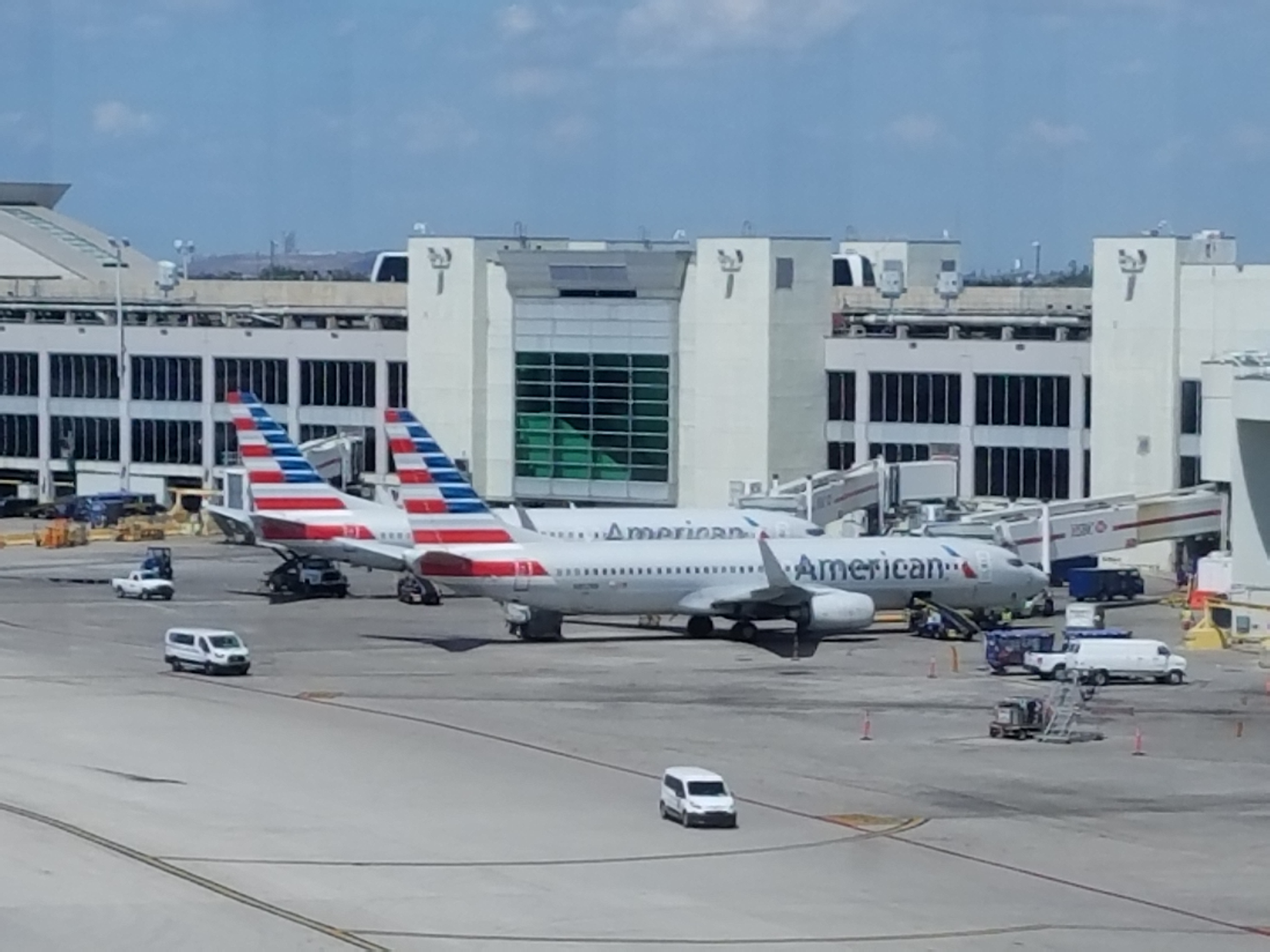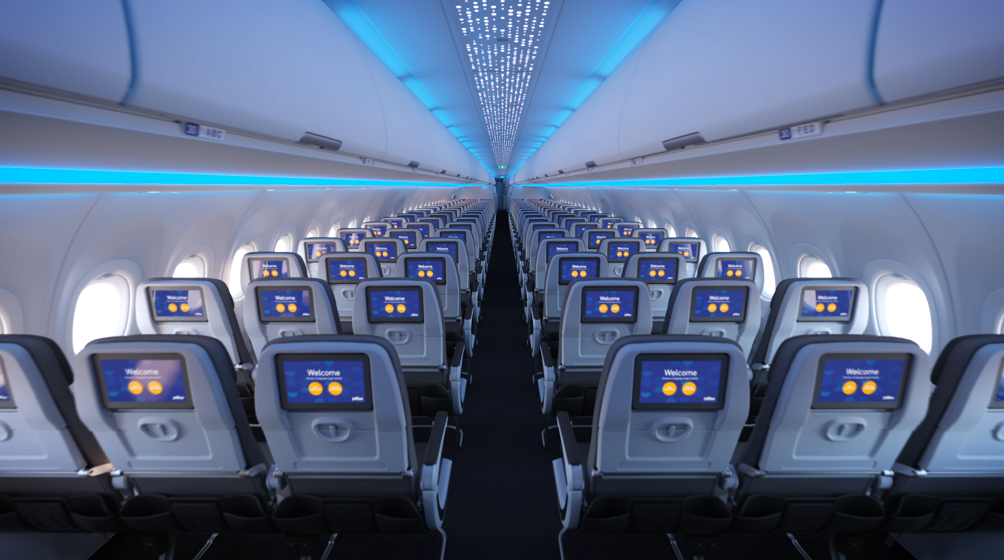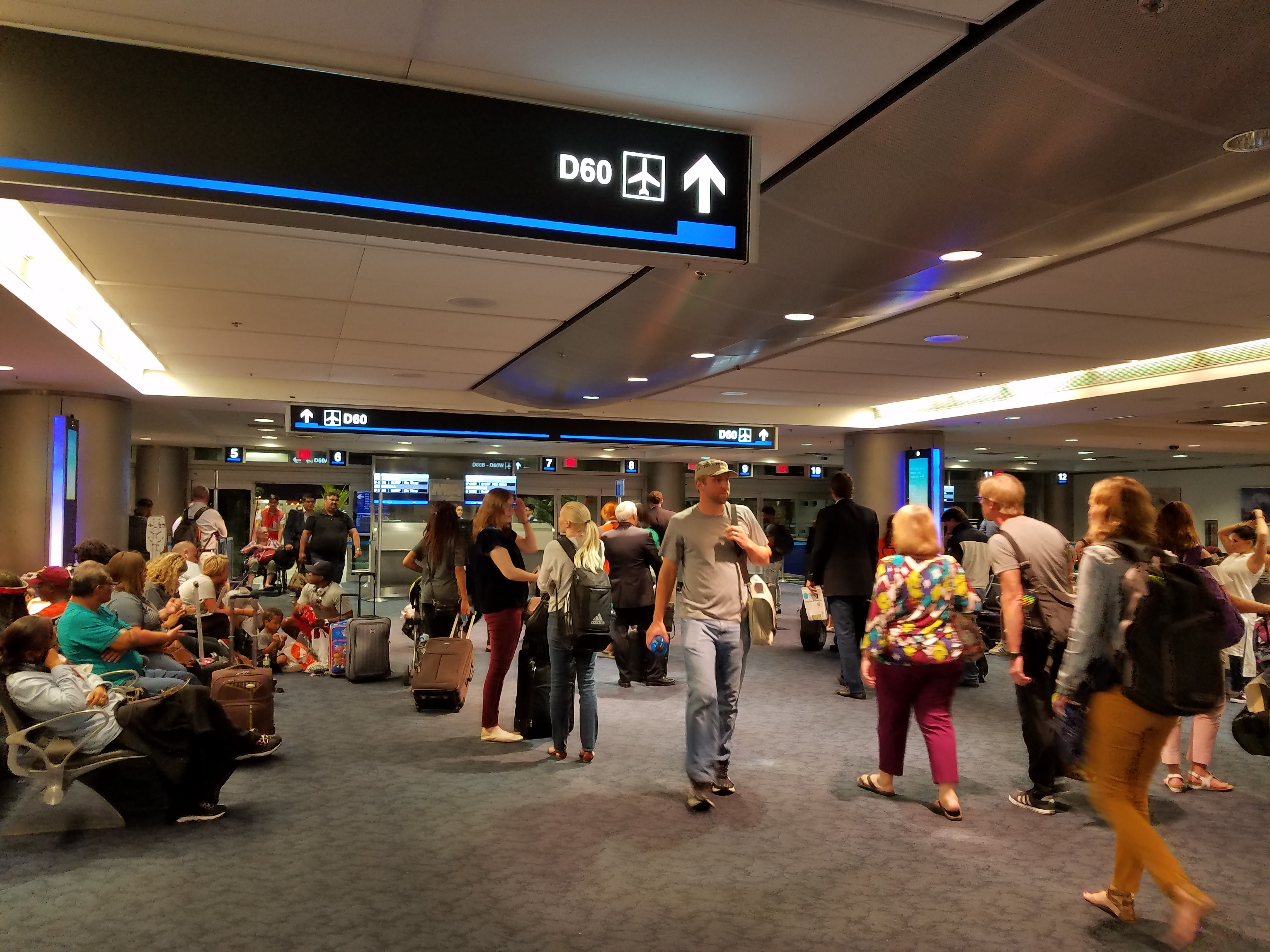American Airlines is financially underperforming the industry. They had a 1.5% net margin for 2023. Flying cost them more than ticket revenue, and they only made money overall from selling frequent flyer miles to banks.
That much can be ascertained from their SEC filings and press releases around earnings. Others will report officially on the earnings call itself, but I like to call out the things that struck me as most interesting, both from official remarks and from answers to analyst and reporter questions – the things that give me greater insight into the airline.
Here are (8) things that stood out to me in the American Airlines fourth quarter earnings call on Thursday morning:
- American is doubling down on direct sells, de-emphasizing traditional corporate travel. Isom noted that the airline’s selling expenses were 10% lower even as revenue is up 15%.
And he noted that direct customers are “11 points more likely to recommend American” though this is a misleading statistic. People buying direct from American already choose American or they wouldn’t be at American’s website or calling their reservations line. It would be shocking if that group wasn’t much more likely to recommend the airline than those who hadn’t affirmatively taken those steps.
Vasu Raja declared, “we sell our product through the internet” and noted that 65% of revenue comes from AAdvantage customers, 45% comes from AAdvantage who are buying “premium content” “better seat, refundability”) and that this is “up 3 points year-over-year.”
Meanwhile he reports that what managed business travel is “down further” but “flat traffic on higher yields” (they’re happy with the business travel they’re getting, presumably hub captives that no longer get corporate discounts). And they plan to “lean further into this” strategy and plan for “reducing selling/servicing through non-internet based channels.”

- AAdvantage mileage-earning for flights will change. This is part of their strategy to encourage customers to book direct, which is less costly for the airline and also gives them the opportunity to upsell customers with better seats and upgrades and to pre-sell checked baggage.
We don’t yet know how this will work and Vasu Raja already flagged the pending change in an employee podcast last month. It may be reduced earnings for those who don’t book direct, or it could be additional miles for those that do.
- Record new credit card customers and revenue in 2023. This isn’t surprising, and nobody ever adjusts for inflation. CEO Robert Isom noted that two-thirds of airline revenue comes from AAdvantage members, and that members account for 70% of upsell and partnership revenue.
- American would be open to re-partnering with JetBlue now that JetBlue has lost an anti-trust trial over acquiring Spirit. While their Northeast Alliance with JetBlue was struck down as well, that’s being appealed and the judge suggested a partnership more like what American has with Alaska would pass muster.
Formally, what American offered was that they’re “open to any partnership that’s better for our customers” they also shared how much they gained in New York during the partnership. The New York market became their largest for enrolling new AAdvantage members and for AAdvantage credit card acquisition. And their slot portfolio performed better (unstated: when JetBlue was operating flights with their slots instead).

- (Unlike United) American’s Basic Economy Isn’t Designed To Be Awful. United Airlines doesn’t allow basic economy customers to bring a full-sized carry on bag onto their flights or even check-in using their mobile app or website if they aren’t checking a bag. During its earnings call, United reported basic economy revenue growth from Frontier and Spirit customers.
In contrast, Vasu Raja says they “do not sell products that are so odious no one will buy it,” instead “basic is an entry level product that gets customers in the door and signed up for AAdvantage.” They want a cheap gateway product, not a low-end one. That explains why there’s still some mileage-earning (unlike Delta) and why they even allow some residual credit (after a change fee) on these fares for AAdvantage members only.
- Miami is doing well. Chief Commercial Officer Vasu Raja noted that they operated the biggest Miami schedule they’ve ever had in December, and it was also the most profitable.

- Doesn’t matter if Brazilian partner Gol goes bankrupt. American owns 5.2% of Gol and Gol provides their connectivity into much of the country, as well as local customers for their flights to the U.S. The carrier is trying to avoid bankruptcy.
Raja argues that they primarily have a commercial partnership that’s mutually beneficial, so “we see no compromise to network connectivity” or to “quality of service.”

- They’re betting on higher costs from paying flight attendants more. Answering an analyst question, American clarified that their financial guidance for 2024 includes higher labor costs from an assumed ratified contract with flight attendants – whose negotiations are ongoing to replace a contract that became amendable in 2019, and where their union has now twice asked the federal government for permission to strike.
I’ve expected that the chances of a deal go up once the current union officer elections are over. Officer candidates can’t compromise without looking weak and jeopardizing their positions. American is offering financial terms equal to Delta (top of industry) and probably can’t go much higher. Hopefully we won’t see wildcat strikes (specific flights on a given day) before a contract finally gets approved.
The things that interest me in an earnings call are usually different than the things that will be pulled out of the call by other commentators, and I don’t consider this a complete account especially of the airline’s financials and fleet plans (which did come up), or their take on the current Boeing situation and how that plays into a narrowbody aircraft order that’s under development. Hopefully, however, it’s illuminating for you as well.


Any mention as to their new strategy on award travel to Europe? Currently only 24 hour plus duration trips are available for award flying from secondary markets while plenty of 16 hour trips are available for cash fares even 11 booking months in advance.
It seems they have servery restricted award travel to Europe- even the BA partner flights are limited to one flight a day often arriving at the European destination late night.
United award bookings are similar to last season but at the 50% increase in miles required, making international coach award values closer to 1.1 cent a point.
Any details on what they value the unredeemed miles at. I bet the spread is huge.
Might provide insights into their pricing.
Were redeemed miles up or down?
I’d be concerned about alienating corporate travel departments and travel agencies. Yes, the margin may not be as high as direct web purchases. But, no need to hack off consistent cash flow while speculating on a non-dedicated revenue source with a mindset of chasing the best fare.
Also, I find AA treats the PAX as a burden and money tree. Shake as hard as you can, then walk away with the bounty while the customer feels violated.
I appreciate that you not only listened to the earnings call but provide commentary. Overall, your blog has been more industry focused of late (there has been alot to discuss in the industry) and the quality of your articles is high.
First off the bat, though, it is important to note that there are many that try to lump DL and UA into the same boat financially and put AA at the bottom and that is simply not accurate.
While AA’s net income margin for 2023 was 1.5%, UA’s was less than 5% and DL’s was just under 8%. so there is a 3 margin point difference between AA and UA and the same difference between UA and DL.
While some would like to lump UA with DL in terms of financial performance, UA is smack dab in the middle of AA and DL. That just simply means that UA is not as good as many try to portray or else AA is not as bad as some try to portray it.
and, for comparison, WN’s met margin was just under 2% so the two Texas HDQ airlines were the two worst performing of the big 4.
Your points are valid. AA simply does not see value in trying to win high value sales – which is why DL and UA still have sales forces – so they have cut their sales force.
AA’s network is being built around markets they can dominate which makes it less necessary or beneficial to have a sales force.
because of that inability to penetrate competitive markets, AA is not going to try to compete in continental Europe or Asia and they can’t regain what they have lost in NYC, BOS or LAX.
Of course AA and B6 would like to redo their partnership and the judge said they could – it would just involve a simple slot lease agreement and codesharing. It is unlikely that there will be enough benefit under a codesharing agreement without revenue sharing to support longhaul international flying at JFK beyond AA hubs. But B6 could feed some traffic at likely lower costs. And B6 would love to have some of the slots it has had to give up and AA would love to make sure that UA can’t get back into JFK so there are lots of good reasons for AA to work w/ B6 like they do on the west coast with AS.
Gol will still feed passengers to AA in or out of chapter 11.
The industry has returned to the same pre-covid structure where DL is the most profitable by a fairly wide margin, AA is at the bottom and UA is in between – much to the frustration of Scott Kirby. The difference now is that WN is no longer in the same class as DL (or vice versa) and that the ULCCs plus B6 are in worse shape than the big 4.
The stock market has liked AA’s news. Even though DL will be the only one of the big 4 and probably the only US airline to be profitable in the 1st quarter, DL’s stock went down when it announced but it is now clear that DL’s finances and guidance was so much stronger than the industry; analysts just had very high expectations for DL and the industry and now realize that their expectations were not realistic.
@Tim Dunn “It is unlikely that there will be enough benefit under a codesharing agreement without revenue sharing to support longhaul international flying at JFK beyond AA hubs.”
In fact there was surprisingly little B6-AA connecting traffic at JFK. The value was in sharing local customers.
@Beachfan we’ll get more data in the 10-K next month
yes, you are correct on the connecting benefit but AA tried to convince everyone that the joint venture with B6 would allow AA to operate long haul routes that AA could not otherwise justify.
You need only look at how little AA has done on the west coast in international growth (none) to see that the AS partnership – a simple codeshare/marketing agreement and not a JV – doesn’t help AA build its international network.
AA needs B6 to be able to put the AA code on some markets that AA will not fly even if AA can’t price those markets.
And AA needs to keep its slots out of UA’s hands.
And Gol has now filed for chapter 11.
I wish airlines would list a charge from the effects of bad customer service and surly customer service. Determine how many paying customers are lost and how much revenue is being lost or given away to cover problems caused by employees.
It’s interesting how some people seem to derive pleasure from others’ struggles.
@Desert Ghost So true. There ought to be some sort of term to describe that pernicious idea.
it is equally sad that some people find any legitimate criticism as an attack on themselves.
Airlines are businesses.
They report their performance publicly.
It is absolutely appropriate to analyze and compare those results.
Such analysis and comparison does not mean anyone wants to see a company liquidated or jobs lost.
People that don’t understand these basic concepts should probably stay off the internet – or at least aviation analysis and chat sites.
Folks, most airline stocks are cyclical and generally make poor long term investments. Over the last 10 years, DAL went up only about 25% (price only) versus 170+% (price only) for S&P500. LUV, the best performing one of the bunch still only managed 49%. AAL is the worst at almost 60% loss over that time. If you must, buy airline stocks only when they’re near their cyclical lows – around 50% (check stocks’ historical data) drop from preceding cyclical high.
jake,
airlines are cyclical because they are at the pointed end of a repeated 10 year cycle of crises – in this century, it has included 9/11, the great recession and covid. your 10 year timeframe includes one of those.
Investing is about timing as much as selecting the right stocks.
And profitability matters because every one of the big 4 has profit sharing which absolutely impacts employee pay. Gary just noted this in the AA FA article.
DL FAs and the rest of DL employees get about 6 weeks of extra pay while AA FAs get 1% – even before the fact that DL FAs get much higher salaries right now.
Anyone that naively thinks that profitability doesn’t affect employee performance simply is ignorant of the way the free enterprise system works -and that includes every airline employee in the US industry.
And there are investors that have made good money on airlines if they understand major factors for the industry and pick the best run companies.
@jns People will complain on the internet and say that they’ll never deal with AA again, but the truth is, yes they will. I’d be willing to bet that AA isn’t losing as much as you think or as much as folks wish they were, due to bad customer service or rude employees.
The fact is, everything that people hate about AA (or any airline) will be put aside when you’re they’re having to make the choice of flying non-stop from an AA hub or taking a connection on another carrier. As much as they’d love to stick it to AA, they won’t.
If airlines failed because of bad customer service and rude employees you’d never see another yellow plane in the sky.
Miami is doing well?
Guess it’s now AAs 3rd best hub (displacing DCA)